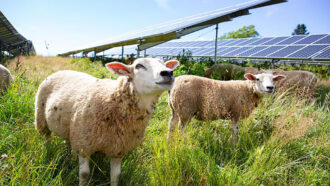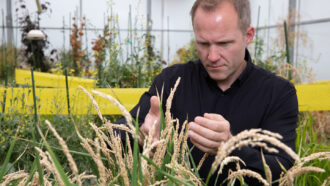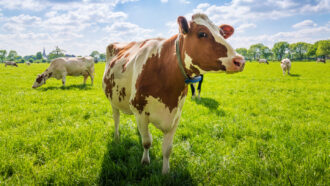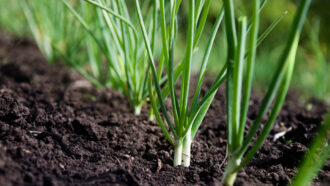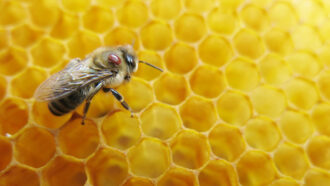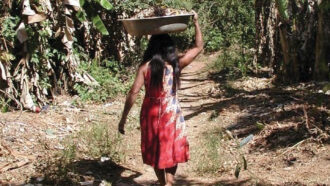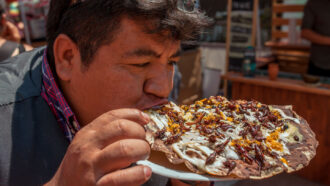Bananas under attack: Understanding their foes
New genetic studies could help researchers gain the upper hand against fungi that infect bananas
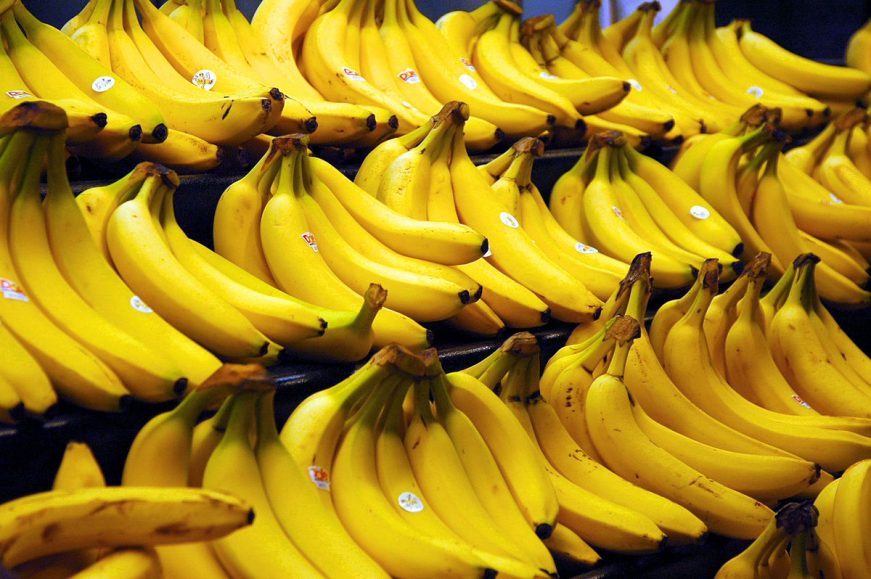
Fungi are threatening this beloved fruit. Genetic analyses have scientists chewing on new ways to fight the blight.
Steve Hopson/Wikimedia Commons (CC BY-SA 2.5)
Farmers are going bananas battling diseases that threaten the popular yellow-skinned fruit. Fungi cause some killer plant blights. And new analyses show these pathogens are growing nastier. Some of the genes in the fungi are changing in ways that allow those fungi to steal the banana’s nutrients. The new data could help researchers breed bananas to thwart the fungal threats.
Rest assured, you won’t get sick eating bananas that came from infected plants. The fungi spread by air and only attack the plants’ leaves. The infected greenery develops small yellow spots. Over time, they darken and expand. The infected tissue eventually dies. Less tissue that’s healthy will slow the plants’ photosynthesis. This is the process by which plants use sunlight to make food. So infected plants produce fewer bananas.
Farmers fight fungal diseases with chemical sprays. But those sprays are expensive. In fact, they can add up to nearly a third of the cost of growing bananas. Those chemicals also can harm the environment. Even worse, the fungi have begun to resist the killing effects of certain sprays. So researchers are looking for new ways to control the fungal infections.
One of the culprits behind the banana blight is a disease known as Black Sigatoka (SEEG-uh-TOKE-uh). It takes its name from a town on the South Pacific island nation of Fiji. That’s where the blight first turned up in the 1960s. Since then, this fungus has spread widely around the world. So have two related fungal species. They cause Yellow Sigatoka and Eumusae (Yu-MYOO-say) leaf spot.
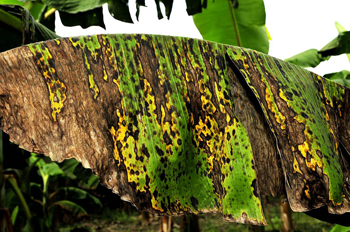
All three diseases look similar, but Black Sigatoka poses the biggest threat. It afflicts a wide range of bananas, including the “Cavendish” variety. This is the sweet “dessert” banana enjoyed in most Western countries. Yellow Sigatoka is a milder disease. Eumusae leaf spot falls somewhere in between the two Sigatokas in terms of threat.
The fungi are closely related. So researchers at the University of California, Davis were puzzled about why they cause such different degrees of harm.
To find out, they worked with researchers at Wageningen University in the Netherlands. The team mapped out the complete set of genes, or genome, of all three fungi. Like other organisms, fungi will, over time, develop mutations — changes in their DNA. Some genetic tweaks could help the fungi survive. Such beneficial DNA changes would likely carry over to future generations.
So to learn how the fungi had adapted to their banana hosts, the researchers looked at which genes in them had changed. They also noted which mutations occurred in the two more damaging (or virulent) fungi.
The shared changes showed up in genes that control the chemical reactions that occur within a banana plant’s cells. Those life-sustaining reactions are known as an organism’s metabolism. The genes help Black Sigatoka and Eumusae fungi break down cell walls in banana leaves. That allows the fungi to steal nourishment from infected cells.
The new analysis suggests these fungi “evolved a more aggressive way to get nutrients from the host,” says Ti-Cheng Chang. He is a computational biologist at St. Jude Children’s Research Hospital in Memphis, Tenn.
Chang and his coworkers published their findings August 11 in PLOS Genetics.
The findings offer food for thought. Could scientists disable some of the banana’s genes to keep fungi from thwarting those chemical reactions? Doing so might slow the infection’s spread.
“It’s a question a number of us are asking,” says James Dale. He’s a biotechnologist at Queensland University of Technology in Australia. He has tinkered with banana genes to create disease-resistant varieties of the fruit.
The new study also looked at other genes that direct the fungi to make special proteins. Those proteins appear to help the pathogen infect banana leaves.
Despite causing similar banana diseases, the three killer fungi have evolved unique sets of virulence proteins. That suggests they each developed different ways to outsmart the immune system of a banana plant. Another study in the same journal has more details on those proteins in Black Sigatoka.
All told, the new data pinpoint specific molecules at play in the infections that threaten some types of popular bananas. “What sorts of things could we do to manipulate the plant so it becomes resistant [to them]?” asks Dale. That, he says, is “clearly where we need to go.”
